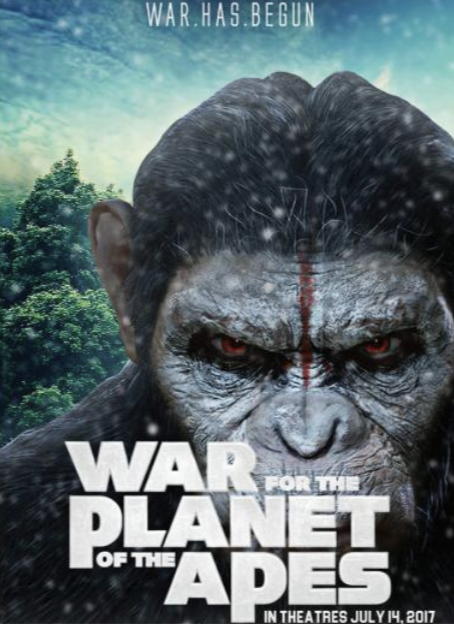By: Dan Kilgallon, Staff Writer
For someone who loves their movies in threes, I was pretty excited to pick up War for the Planet of the Apes when it finally hit Blu-ray/DVD a few weeks ago. The film completes what I consider to be an underrated science fiction trifecta that began with 2011’s Rise and followed up with 2014’s Dawn. I am typically not on board with reboots in Hollywood, but Rise provided an excellent origin tale with enough originality to function as an above average action movie; a “Curious George” of sorts, for adults. I was looking forward to Dawn in 2014 and walked out of the theater shocked by the grittiness of the dystopia depicted and improved visual effects used to bring the monkeys to life in an even more realistic way. At this point, I knew that that this Planet of the Apes reboot trilogy had a real chance to be something special.
War for the Planet of the Apes takes place just a few years after the battle that concluded it’s predecessor. The highly intelligent chimpanzee Caeser (Andy Serkis) and his society of apes have continued to live in the woods during this time, taking shelter in a tree hideout that is designed to protect them from the remaining humans. As explained in the first film, much of humanity was destroyed by a deadly virus known as the Simian flu. Now a ruthless, unnamed “Colonel” (Woody Harrelson) leads the last military force known as Alpha Omega. They attack the apes in the beginning of this movie and Caesar attempts to make peace with them after. However, Caeser is eventually forced to take matters into his own hands and set out on a path of vengeance for the greater good of his kind.
A part of me feared that War would be explicitly indicative of it’s title and loaded with over the top battle sequences from start to finish. While there is action sprinkled in doses throughout the movie, the story is really more focused on the emotional and psychological warfare between the conflicting species. Andy Serkis and Woody Harrelson really shined in making this happen, with a big part of the story shaping into a personal conflict between the two leaders. The motion capture work of Andy Serkis was somehow better than it was in the first two movies; it is obvious that he once more poured his heart and soul into making this monkey come to life. The result was a visually stunning character with a more compelling story arc than most other human antagonists of Hollywood blockbusters. Woody Harrelson complements this nicely through his own performance as a frightening antagonist with a dark moral compass.
It is hard to look past the subtexts and implications that have come with the Planet of the Apes franchise since the original film was released in 1968. War for the Planet of the Apes builds upon this history and provides plenty more room for discussion. Perhaps most obvious is the idea of how we treat animals in society. For example, by the middle of this movie, the apes find themselves held captive in a giant quarantine facility where they are used for manual labor by the humans. Some read this a metaphor for animal abuse while others would others would go a step further and say that the apes of this franchise have always been meant to represent oppressed minorities of our country. On top of these implications, there is plenty of imagery from our own global conflicts present in this movie. First of all, the facility where the monkeys are held captive is very reminiscent of concentration camps of the Second World War. Also, the decorated helmets worn by the Alpha-Omega soldiers seem to be a direct reference to the same headgear of the Vietnam War.
After another rewatch, I can confidently say that War for the Planet of the Apes remains my favorite film from a successful summer season. The movie is driven by the close of an epic character arc for Caesar and supplemented by plenty of previously mentioned thematic layers. This film can be consumed for entertainment while opening up more serious discussions; a rare feat for a summer blockbuster.

